La Crosse Technology WS-9057U-IT Handleiding
La Crosse Technology
Weerstation
WS-9057U-IT
Bekijk gratis de handleiding van La Crosse Technology WS-9057U-IT (11 pagina’s), behorend tot de categorie Weerstation. Deze gids werd als nuttig beoordeeld door 40 mensen en kreeg gemiddeld 4.4 sterren uit 20.5 reviews. Heb je een vraag over La Crosse Technology WS-9057U-IT of wil je andere gebruikers van dit product iets vragen? Stel een vraag
Pagina 1/11

1
Weather Station
Model WS-9057U
Instruction Manual
INSTANT TRANSMISSION is the state-o
f
-
the-art new wireless transmission
technology, exclusively designed and
developed by LA CROSSE
TECHNOLOGY. INSTANT
TRANSMISSION offers you an
immediate update (every 4 seconds!) of
all your outdoor data measured from the
transmitters: follow your climatic
variations in real-time!
This product offers:
2
Foldable
Stands
LCD
Displa
y
Function Keys
INVENTORY OF CONTENTS
1. Wireless Weather Station
2. Thermo/hygro transmitter (TX29UD-TH-IT)
3. Instruction manual
FEATURES:
The Weather Station
Battery
Compartment
Wall Mount
3
WWVB Radio controlled time with manual setting option
Time reception ON/OFF (user selectable)
12/24 hour time display
Time zone option ±12 hours
Daylight saving time (DST On/Off)
Weekday and day calendar display (year and month only in setting
mode)
Alarm setting with snooze function
Display 12 Moon phases throughout the year
Weather forecasting with weather tendency indicator
Indoor comfort indicator
Temperature display in °F/°C
Indoor and outdoor temperature display with MIN/MAX records and
time of reception
Humidity data display as RH%
Indoor and outdoor humidity display with MIN/MAX records
Relative air pressure hPa/ inHg with adjustable reference value
Weather icon sensitivity setting
Relative air pressure history for the past 24 hours (electronic
barometer with barometric pressure trend)
4
LCD contrast selectable
Can receive up to 3 outdoor transmitters
Wireless transmission at 915 MHz
Signal reception intervals at 4 seconds
Low battery indicator
Table standing or wall mounting
Thermo-Hygro Transmitter
Remote transmission of outdoor
temperature and humidity to weather station
by 915 MHz signals
Alternate display of temperature and
humidity display
Water-resistant casing
Wall mounting case. (Mount in a sheltered
place. Avoid direct rain and sunshine

5
SETUP
WHEN ONE TRANSMITTER IS USED
1. First, insert the batteries in the transmitter (see “How to install and
replace batteries in the Thermo-hygro outdoor transmitter” on
page 11).
2. Within 2 minutes of powering up the transmitter, insert the batteries
in the Weather Station (see “How to install and replace batteries
in the Weather Station” on pages 11-12). Once the batteries are
in place, all segments of the LCD will light up briefly and a short
signal tone will sound. Following the indoor temperature/humidity
and the time, as 12:00 will be displayed. If this information is not
displayed on the LCD after 60 seconds, remove the batteries and
wait for at least 60 seconds before reinserting them. Once the
indoor data is displayed user may proceed to the next step.
3. After the batteries are inserted, the Weather station will start
receiving data signal from the transmitter. The outdoor temperature
and humidity data should then be displayed on
the Weather station.
If this does not happen after 2 minutes, the batteries will need to be
removed from both units and reset from step 1.
4. The distance between the Weather Station and the transmitter
6
should not be more than 300 feet to ensure sufficient 915 MHz
transmission. (see notes on “Positioning” and “915 MHz
Reception”).
Note: In the event of changing batteries of the units, ensure the batteries
do not spring free from the contacts. Always wait at least 1 minute after
removing the batteries before reinserting, otherwise start up and
transmission problems may occur.
WHEN MORE THAN ONE TRANSMITTER IS USED
1. User shall remove all the batteries from the Weather Station and
transmitters, and wait 60 seconds.
2. Insert the batteries in the first transmitter.
3. Within 2 minutes of powering up the first transmitter, insert the
batteries in the Weather Station. Once the batteries are in
place, all
segments of the LCD will light up briefly and a short signal tine will
sound. Following the indoor temperature/humidity and the time as
12:00 will be displayed. If this information is not displayed on the
LCD after 60 seconds, remove the batteries from both units and
wait for at least 60 seconds before reinserting them.
7
4. The outdoor temperature and humidity data from the first
transmitter (channel 1) and the signal reception icon should be
displayed on the Weather Station. If this does not happen after 2
minutes, the batteries will need to be removed from both units and
reset from step 1.
5. Insert the batteries in the second transmitter as soon as the signal
reception icon and outdoor data are displayed on the Weather
Station. Then within 2 minutes, the channel 2 outdoor data from the
second transmitter and the "channel 2" icon should be displayed on
the Weather Station. If this does not happen after 2 minutes, the
batteries will need to be removed from all the units and reset from
step 1.
Note : User shall insert the batteries into the second transmitter
within 45 seconds after the Weather Station displays the
information of the first transmitter.
6. Insert the batteries in the third transmitter as soon as the "channel
2" icon and outdoor data are displayed on the Weather Station.
Then within 2 minutes, the channel 3 outdoor data from the third
transmitter will be displayed and the channel icon will shift back to
"1" once the third transmitter is successfully received. If this is not
happen, user shall restart the setting up from step 1.
8
Note : User shall insert the batteries into the third transmitter within
45 seconds after the Weather Station displays the information of
the first transmitter. Or immediately after reception of the second
transmitter is finished.
7. The distance between the Weather Station and the transmitter
should not be more than 300 feet to ensure sufficient 915 MHz
transmission. (see notes on “Positioning” and “915 MHz
Reception”).
IMPORTANT:
Transmission problems will arise if the setting for additional sensors is not
followed as described above. Should transmission problems occur, it is
necessary to remove the batteries from all units and start again the set-up
from step 1.
Notes:
If the signal reception is not successful on the first frequency of
915MHz for 45 seconds, the frequency is changed to 920MHz and
the learning is tried for another 45 seconds. If it is still not
successful the reception is tried for 45 seconds on 910MHz. This
will also be done during re-synchronization.

9
When the weather station is receiving the WWVB time signal, the
outdoor transmitter data signal will temporarily not be received by
the weather station. During this short period of time, the outdoor
readings shown on the weather station will not be renewed until the
WWVB time signal is successfully received.
TO INSTALL AND REPLACE BATTERIES IN THE THERMO-
HYGRO TRANSMITTER
The Thermo-Hygro Transmitter uses 2 x AA, IEC, LR6,
1.5V batteries. To install and replace the batteries,
please follow the steps below:
1. Remove the cover.
2. Insert the batteries, observing the correct polarity
(see marking).
3. Replace the battery cover.
Note:
In the event of changing batteries in any of the units, all units need to be
reset by following the setting up procedures. This is due to a random
security code assigned by the transmitter at start-up. This code must be
10
received and stored by the Weather Station in the first 3 minutes of power
being supplied to the transmitter.
TO INSTALL AND REPLACE BATTERIES IN THE WEATHER
STATION
The Weather Station uses 2 x C, IEC LR14, 1.5V batteries. To install and
replace the batteries, please follow the steps below:
1. Insert finger or other solid object in the space at the bottom center
of the battery compartment and lift up to remove the cover.
11
2. Insert batteries observing the correct polarity (see marking).
3. Replace compartment cover.
BATTERY CHANGE:
It is recommended to replace the batteries in all units on an annual basis
to ensure optimum accuracy of these units.
Please participate in the preservation of the
environment. Return used batteries to an authorized
depot.
DEVICE RESET
The Weather Station and the Thermo-hygro transmitter need to be reset
when one of the following conditions occur:
Unsuccessful 915 MHz signal reception.
Malfunction on the units.
Batteries replacement.
For resetting, remove all batteries from the units. Wait at least for 1
minute before powering up the Weather station again. Proceed from step
1 in “Setting Up”.
12
ABOUT WWVB RADIO CONTROLLED TIME
The NIST (National Institute of Standards and Technology—Time and
Frequency Division) WWVB radio station is located in Ft. Collins,
Colorado, and transmits the exact time signal continuously throughout the
United States at 60 kHz. The signal can be received up to 2,000 miles
away through the internal antenna in the weather projection station.
However, due to the nature of the Earth’s Ionosphere, reception is very
limited during daylight hours. The wireless weather station will search for
a signal every night when reception is best.
The WWVB radio station receives the time data from the NIST Atomic
clock in Boulder, Colorado. A team of atomic physicists is continually
measuring every second, of every day, to an accuracy of ten billionths of
a second per day. These physicists have created an international
standard, measuring a second as 9,192,631,770 vibrations of a Cesium-
133 atom in a vacuum. For more detail, visit
http://www.boulder.nist.gov/timefreq.htm. To listen to the NIST time, call
(303)499-7111. This number will connect you to an automated time,
announced at the top of the minute in “Coordinated Universal Time”,
which is also known as Greenwich Mean Time (GMT). This time does not
follow Daylight Saving Time changes. After the top of the minute, a tone
Product specificaties
| Merk: | La Crosse Technology |
| Categorie: | Weerstation |
| Model: | WS-9057U-IT |
Heb je hulp nodig?
Als je hulp nodig hebt met La Crosse Technology WS-9057U-IT stel dan hieronder een vraag en andere gebruikers zullen je antwoorden
Handleiding Weerstation La Crosse Technology

4 Maart 2025

7 Januari 2025

7 Januari 2025

19 November 2024

19 November 2024

19 November 2024

22 Augustus 2024

4 Maart 2024

15 Augustus 2023

15 Augustus 2023
Handleiding Weerstation
- Rocktrail
- Discovery
- Lexibook
- EMOS SELECT
- GoGEN
- Levenhuk
- Thierry Mugler
- Konig
- Ea2 LABS
- Cresta
- Saphir
- Day
- EQ3
- EMOS
- Technoline
Nieuwste handleidingen voor Weerstation
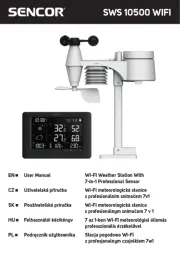
29 Juli 2025
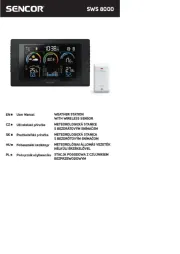
29 Juli 2025
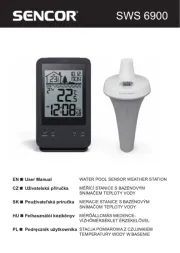
29 Juli 2025
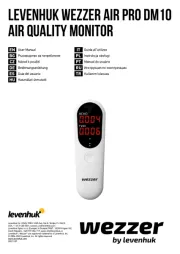
15 Juli 2025
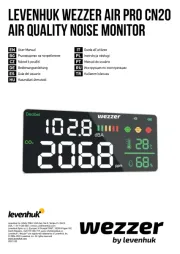
15 Juli 2025
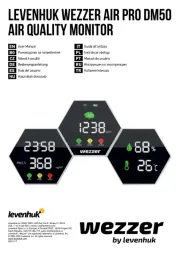
14 Juli 2025
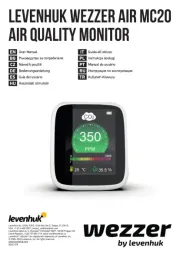
14 Juli 2025
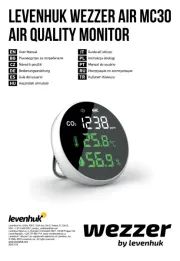
14 Juli 2025
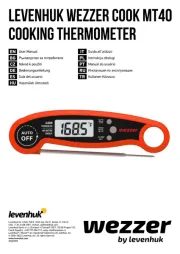
14 Juli 2025
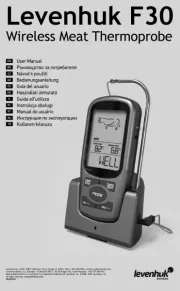
14 Juli 2025